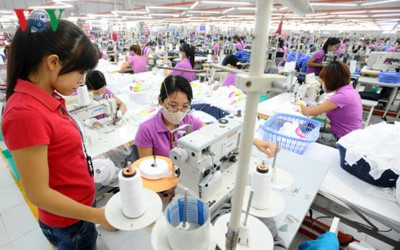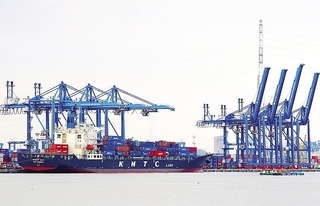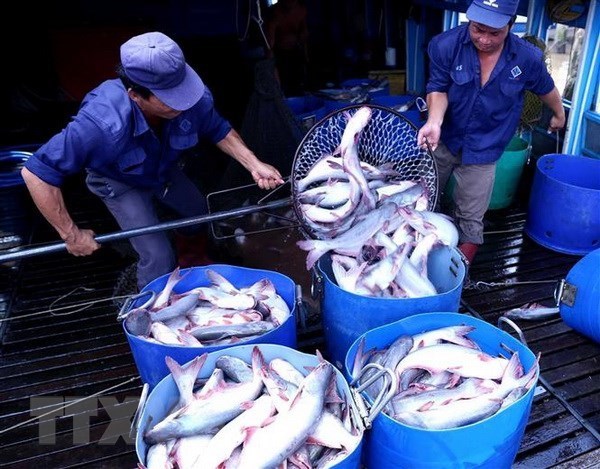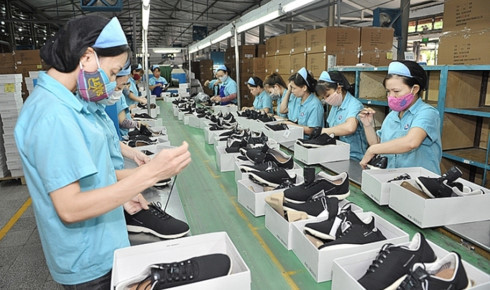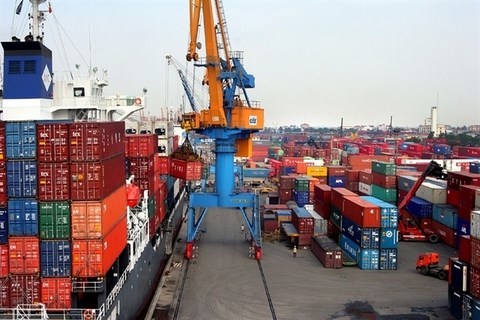- © Copyright of Vietnamnet Global.
- Tel: 024 3772 7988 Fax: (024) 37722734
- Email: [email protected]
CPTPP
Update news CPTPP
VN garment and footwear firms will have to wait for EVFTA benefits
 Textile, garment and footwear products made in Vietnam will not enjoy immediate tariff cuts after the EU-Viet Nam Free Trade Agreement (EVFTA) comes into effect.
Textile, garment and footwear products made in Vietnam will not enjoy immediate tariff cuts after the EU-Viet Nam Free Trade Agreement (EVFTA) comes into effect.
Vietnam steps up share sale plans to foreign investors
 Vietnam’s ratification of the CPTPP and the EVFTA compels the country to liberalize the state sector.
Vietnam’s ratification of the CPTPP and the EVFTA compels the country to liberalize the state sector.
Industrial real estate developers see windfall as demand soars
 The rent in industrial zones (IZ) has increased rapidly. Some provinces in the eastern part of the south have no more land to lease, while investments in the processing and manufacturing industry continue to rise.
The rent in industrial zones (IZ) has increased rapidly. Some provinces in the eastern part of the south have no more land to lease, while investments in the processing and manufacturing industry continue to rise.
Trade war to benefit Vietnam’s fashion: Fitch Solutions
 Vietnam and Bangladesh are forecast to reap benefits from becoming alternative sourcing destinations as the fashion sector is reckoned the most exposed amid an escalating US - China trade war, according to Fitch Solutions analysts.
Vietnam and Bangladesh are forecast to reap benefits from becoming alternative sourcing destinations as the fashion sector is reckoned the most exposed amid an escalating US - China trade war, according to Fitch Solutions analysts.
EVFTA and CPTPP expected to help Japan become Vietnam’s No.1 investor again
 Japanese companies with abundant expertise in many fields such as banking, insurance, construction, logistics, accounting, graphic design, among others, are expected to have greater opportunities in Vietnam’s market.
Japanese companies with abundant expertise in many fields such as banking, insurance, construction, logistics, accounting, graphic design, among others, are expected to have greater opportunities in Vietnam’s market.
Vietnamese PM slashes import/export tariffs under CPTPP
 Tariffs on imported products including fruit and frozen foods from six member countries of the CPTPP will be reduced to zero backdated to January 14 this year to 2022.
Tariffs on imported products including fruit and frozen foods from six member countries of the CPTPP will be reduced to zero backdated to January 14 this year to 2022.
CPTPP gives great chances for Vietnam’s tra fish exports
 The Comprehensive and Progressive Agreement for Trans-Pacific Partnership (CPTPP) is opening the door wide for Vietnamese tra fish to enter the markets of 10 other members of the deal.
The Comprehensive and Progressive Agreement for Trans-Pacific Partnership (CPTPP) is opening the door wide for Vietnamese tra fish to enter the markets of 10 other members of the deal.
Decree set to benefit 300 goods from CPTPP tariff cuts
 Some 300 goods are expected to enjoy preferential tariffs under a pending decree detailing tariff cuts under the Comprehensive and Progressive Agreement for Trans-Pacific Partnership (CPTPP).
Some 300 goods are expected to enjoy preferential tariffs under a pending decree detailing tariff cuts under the Comprehensive and Progressive Agreement for Trans-Pacific Partnership (CPTPP).
Vietnam warned against being too eager for Chinese capital
 Welcoming foreign investments, economists have once again warned about the negative impact that Chinese investments have had on Vietnam’s economy.
Welcoming foreign investments, economists have once again warned about the negative impact that Chinese investments have had on Vietnam’s economy.
Foreign livestock companies see potential in Vietnamv
 While Vietnamese livestock companies complain they are meeting difficulties, foreign companies are eager to invest in Vietnam.
While Vietnamese livestock companies complain they are meeting difficulties, foreign companies are eager to invest in Vietnam.
M&A in Vietnam’s retail industry on the rise in 2019
Retail is attractive for investors as the industry has advantages after foreign wholly-owned retail firms have been allowed to set up in Vietnam and taxes imposed on most of goods imported from other ASEAN countries to Vietnam are exempted.
Vietnam’s exports to CPTPP countries set to surge
Vietnam’s exports to member countries of the Comprehensive and Progressive Agreement for Trans-Pacific Partnership are expected to increase strongly through 2030, reaching 25 percent of the nation’s total exports.
CPTPP: Vietnamese exporters set for bonanza in Canadian market
 Vietnamese exporters are eyeing Canada as ripe for profits thanks to the Comprehensive and Progressive Agreement for Trans-Pacific Partnership (CPTPP), experts said at a conference in HCMC on April 10.
Vietnamese exporters are eyeing Canada as ripe for profits thanks to the Comprehensive and Progressive Agreement for Trans-Pacific Partnership (CPTPP), experts said at a conference in HCMC on April 10.
US investment ready to fill the gaps
As American investors see bright growth prospects in Vietnam that is climbing global supply chains, many are pushing ahead with ventures across the country.
Wooden furniture producers prefer outsourcing, reluctant to build brands
VietNamNet Bridge - Vietnam is a big woodwork exporter, but products are labeled as foreign made, with few local brands.
Deep-water seaports expect big benefits from CPTPP
VietNamNet Bridge - The fourth largest container carrier in the world is planning to provide an HCMC-Australia direct route in the near future.
In CPTPP period, medium-, high-ranking staff will face risk of job loss
VietNamNet Bridge - Experts have warned that the more competitive labor market in the CPTPP period will put Vietnamese medium- and high-ranking workers at a higher risk of job loss.
US trade war with China to strengthen Vietnam’s competitiveness
Vietnam has free trade agreements with Canada, Japan and Mexico (through CPTPP), and plans to sign an FTA with the EU. These will be advantages in the US - China trade war.
National Assembly likely to approve CPTPP
Prime Minister Nguyen Xuan Phuc said Vietnam would likely approve the Comprehensive and Progressive Agreement for Trans Pacific Partnership (CPTPP) at the National Assembly meeting this month.
CPTPP, EVFTA help Vietnam’s garment-textile lure investment
Free trade agreements, particularly the Comprehensive and Progressive Agreement for Trans-Pacific Partnership and the EU-Vietnam Free Trade Agreement, are the driving force to attract big investments in Vietnam’s garment-textile industry.



